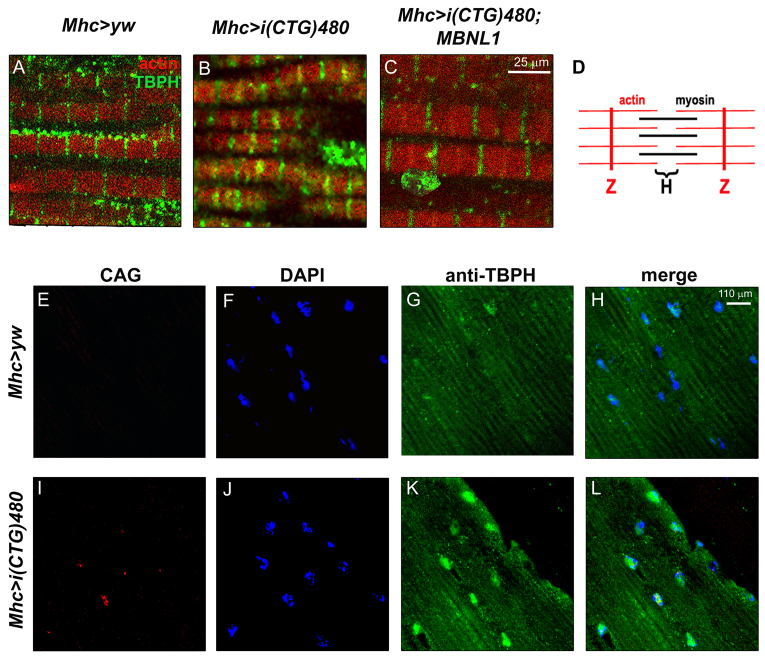Fig. 3.
Expression of expanded CTG repeats modifies TBPH localization in the Drosophila muscle. (A–C) Fluorescent confocal images of rostrocaudal cryosections from adult Drosophila thoraces stained with an anti-TBPH antibody (green), and counterstained with phalloidin (red). In control flies (Mhc>yw; A) TBPH was detected preferentially in the cytoplasm, as a part of the sarcomeric H-bands. (B) Expression of i(CTG)480 in the muscle [Mhc-Gal4 UAS-i(CTG)480] enhanced the TBPH signal in the sarcomeric Z-bands. (C) Coexpression of i(CTG)480 with human MBNL1 [Mhc-Gal4 UAS-i(CTG)480>UAS-MBNL1] partially rescued the sarcomeric localization of TBPH. (D) Representation of the basic organization of a sarcomere. (E–L) Fluorescent confocal images comparing the subcellular distribution of i(CUG)480 RNA (fluorescent in situ hybridization using a CAG red-labeled probe; E,I) with TBPH protein (green; G,K; see merge in H,L), in control (E–H) and CTG-expressing flies (I–L). Expression of CTG repeats in the muscle caused a marked increase in nuclear TBPH, which did not seem to colocalize with nuclear CUG-RNA foci. Nuclei were counterstained with DAPI (blue; F,J).

